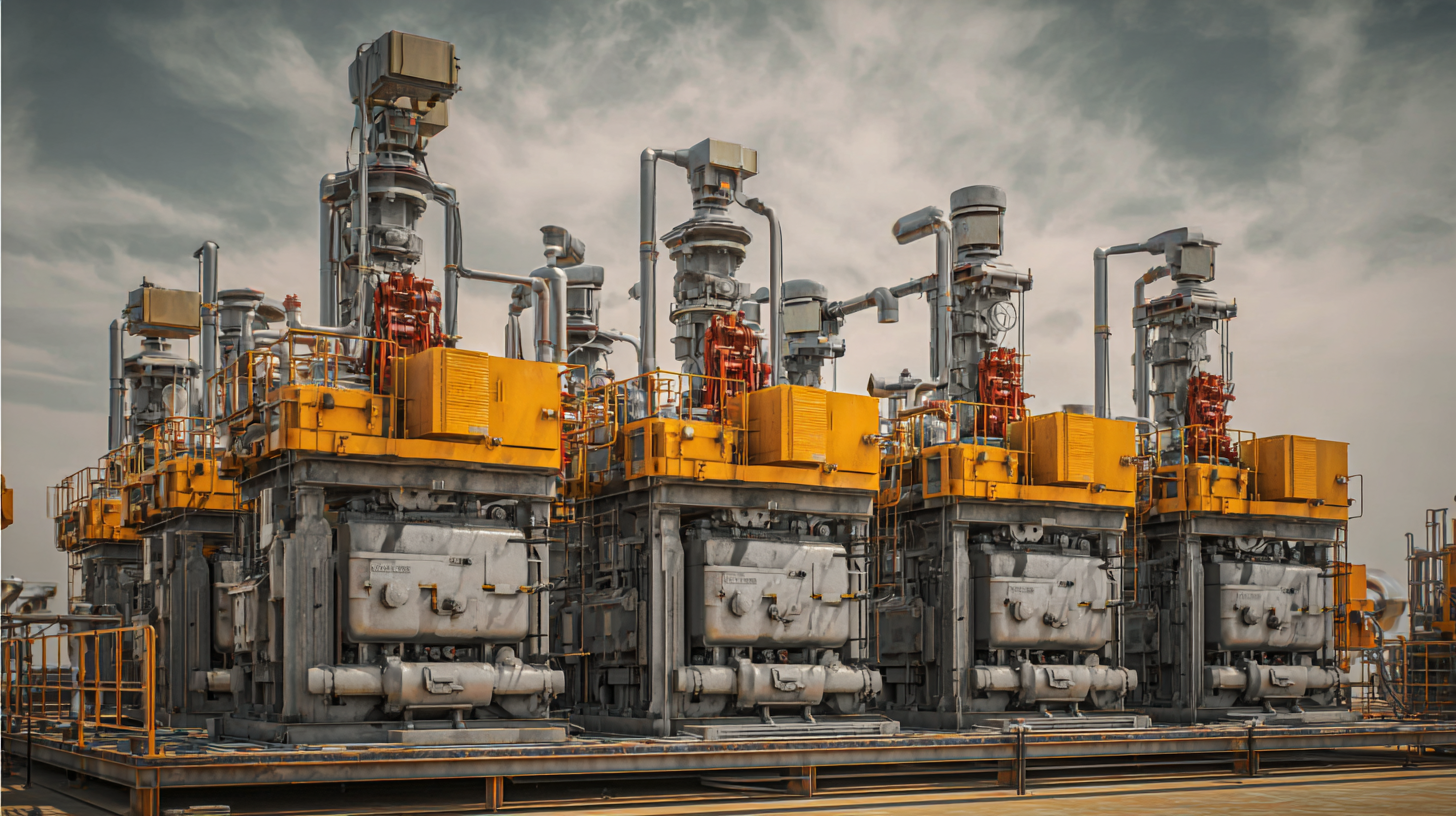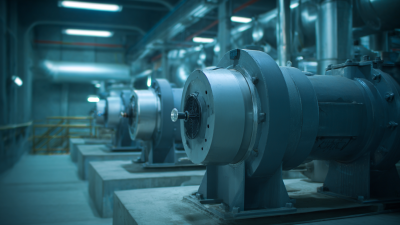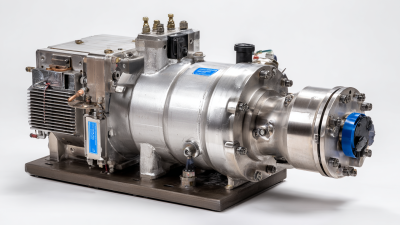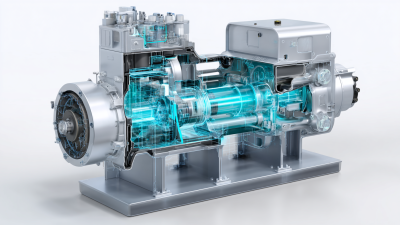- Eng
- Deu
- Fra
Understanding the Future of Energy: How Oil Pumps Power the Transition to Renewable Resources
As the world grapples with the imperative transition from fossil fuels to renewable energy sources, understanding the role of oil pumps in this transformation is crucial. According to the International Energy Agency (IEA), global oil demand is projected to peak around 2025, necessitating a paradigm shift where oil infrastructure evolves to support cleaner energy systems.
 Oil pumps, traditionally seen as symbols of fossil fuel reliance, are being reimagined as integral components in the hybrid energy landscape. Reports from Deloitte highlight that many oil companies are investing heavily in technology that enables the integration of renewable energies with existing oil infrastructure, thereby optimizing efficiency and reducing carbon footprints. This sets the stage for a future where oil pumps not only facilitate the extraction of oil but also serve as pivotal tools in the strategic transition towards more sustainable energy resources.
Oil pumps, traditionally seen as symbols of fossil fuel reliance, are being reimagined as integral components in the hybrid energy landscape. Reports from Deloitte highlight that many oil companies are investing heavily in technology that enables the integration of renewable energies with existing oil infrastructure, thereby optimizing efficiency and reducing carbon footprints. This sets the stage for a future where oil pumps not only facilitate the extraction of oil but also serve as pivotal tools in the strategic transition towards more sustainable energy resources.
The Role of Oil in the Current Energy Landscape
In the current energy landscape,
oil remains a pivotal player,
despite the growing emphasis on renewable resources.
According to the International Energy Agency (IEA), oil accounted for about
31% of the global energy mix in 2022,
a clear indication of its continued dominance.
The demand for oil is projected to peak around 2025, largely due to the rise of electric vehicles and renewable capacity;
however, it is essential to note that oil will still be a
crucial energy source for industrial processes and petrochemicals
well into the next decade.
Moreover, oil companies are increasingly investing in renewable technologies while simultaneously boosting their production efficiencies.
A report by the World Petroleum Council highlights that major oil firms are allocating significant portions of their capital expenditure
towards cleaner energy initiatives, with investments estimated to exceed
$150 billion by 2030.
This dual approach not only aids in bridging the gap towards a greener future
but also reinforces the notion that oil and renewables can coexist.
The current energy landscape is marked by this transitional phase, where oil is not merely an endpoint
but a stepping stone towards a more sustainable energy future.
The Impact of Oil Revenue on Renewable Energy Development
The transition to renewable energy is increasingly critical in the face of climate change and environmental degradation. However, the reality remains that oil revenue plays a significant role in funding this transition. According to the International Energy Agency (IEA), global investment in renewable energy reached over $300 billion in 2020, yet many developing countries still rely heavily on oil revenues to finance these initiatives. For instance, nations like Saudi Arabia and Nigeria are using their oil wealth to diversify their energy portfolios, investing in solar and wind projects to ensure long-term sustainability.

Furthermore, a report by Bloomberg New Energy Finance (BNEF) highlights that countries with substantial oil reserves can leverage their earnings to accelerate the adoption of cleaner technologies. The report indicates that every dollar spent on renewable energy could lead to a reduction of around 0.3 tons of CO2 emissions, showcasing the potential positive impact of redirecting oil revenues. Therefore, while oil is often viewed as a liability in the fight against climate change, it can serve as a crucial catalyst for the development and deployment of renewable energy resources when managed correctly.
Technological Innovations in Oil Extraction and Renewable Integration
The integration of technological innovations in oil extraction is pivotal to facilitating the transition to renewable energy sources. Advances in hydraulic fracturing, horizontal drilling, and enhanced oil recovery techniques have significantly increased the efficiency of oil extraction processes. These methods not only optimize production but also reduce the environmental footprint of fossil fuel extraction, thereby aligning traditional oil operations with contemporary sustainability goals. By investing in cleaner extraction technologies, the oil industry can play a critical role in supporting a more resilient energy infrastructure.
Moreover, the synergy between oil production and renewable energy initiatives is becoming increasingly evident. Technologies such as carbon capture and storage (CCS) can mitigate emissions from oil processing, while innovative battery storage solutions enable better integration of intermittent renewable energy sources like wind and solar. This dual approach not only helps in maintaining a reliable energy supply during the transition phase but also fosters a collaborative ecosystem where oil and renewable sectors drive each other's growth. Embracing these technological advancements, the energy sector can pave the way for a more sustainable future while still leveraging the existing strengths of oil resources.
Understanding the Future of Energy: How Oil Pumps Power the Transition to Renewable Resources - Technological Innovations in Oil Extraction and Renewable Integration
| Dimension | Data |
|---|---|
| Global Oil Production (million barrels/day) | 92.0 |
| Investment in Renewables (billion USD) | 300 |
| Oil Extraction Efficiency (%) | 85 |
| Global Renewable Energy Capacity (GW) | 2800 |
| Decrease in Oil Demand (2025 projection, %) | 10 |
| Carbon Capture Rate (%) | 70 |
| Projected Solar Growth (2025, % increase) | 40 |
| Wind Energy Share of Global Capacity (%) | 22 |
Challenges and Opportunities for Transitioning to Renewable Energy
The transition to renewable energy presents both significant challenges and opportunities. As global dependence on fossil fuels wanes, industries must adapt to a rapidly changing energy landscape. A key factor is the growth in energy management systems like V2H (Vehicle-to-Home), which is anticipated to reach a market value of $93.58 million by 2024 and soar to $532.59 million by 2032, reflecting a compound annual growth rate of 24.28%. This shift highlights the urgent need for companies to embrace sustainable practices that minimize environmental impacts.

Additionally, the containerized ESS (Energy Storage Systems) market is set for tremendous growth. Expected to expand from $14.69952 billion in 2024 to $55.12791 billion by 2032, this sector is crucial for balancing energy supply and demand in a renewable-dominated future. Governments, investors, and employers must make bold decisions to seize the potential of this green economy, creating exciting job opportunities and fostering green growth.
Tips: Companies should invest in innovative technologies that enhance energy efficiency and sustainability. Prioritizing training programs for green jobs will enable workers to adapt to new roles in the evolving energy sector. Collaboration between public and private sectors is essential for overcoming barriers to renewable energy adoption.
Future Energy Policies: Balancing Oil Dependence and Sustainability
As nations strive to transition towards renewable resources, a delicate balance must be struck between ongoing oil dependence and the push for sustainability. Oil remains a cornerstone of the global economy, underpinning sectors from transportation to manufacturing. Policymakers face the daunting challenge of managing this dependence while facilitating a meaningful shift towards cleaner energy sources. Implementing stringent regulations on emissions, alongside incentives for renewable energy development, is essential in shaping a sustainable energy landscape.
Future energy policies should encourage innovation in both the oil and renewable sectors. Investments in technology can enhance the efficiency of oil extraction and processing, thereby reducing environmental impacts. Concurrently, a robust framework that promotes renewable energy adoption—such as subsidies, tax breaks, and research grants—can stimulate growth in alternative resources. This symbiotic approach not only addresses energy demand but also fosters a diversified energy portfolio, ultimately leading towards a more sustainable future. Balancing these elements is crucial in mitigating climate change while ensuring energy security and economic stability.
Related Posts
-

The Impact of Vacuum Blowers on Reducing Environmental Noise Pollution
-

Understanding Waste Pumps How They Work and Their Importance in Modern Waste Management
-

The Essential Guide to Understanding Oil Vacuum Pumps and Their Applications in Industry
-

Understanding the Science Behind Rotary Vane Vacuum Pumps for Industrial Applications
-

The Essential Guide to Understanding Vacuum Pumps for Everyday Use
-

Exploring the Efficiency of Vacuum Pumps: A Deep Dive into Applications and Performance Metrics
